How To Minimize the Risk of Common Baseball Injuries
Injuries in baseball, like strained arms and sore legs, can steal your season. Baseball injuries hit hard, then linger.
As a youth baseball coach, certified strength coach, and sports nutritionist, I’ve seen my share of softball and baseball injuries on the field. Some injuries can be prevented, others are simply “freak” accidents that happen.
That being said, with smart habits and the right gear, you can stay on the field and play your best by lowering your risk of injury and needing to see an orthopedic.
This guide explains common baseball injuries, from shoulder injuries to ankle sprains. You will learn how to prevent overuse injuries, spot early warning signs, and speed up recovery. Use these steps to protect your elbow, build strength, and keep your game sharp.
Disclaimer: This article is for informational purposes only and is not meant to treat or diagnose any condition. It is recommended that you speak with your doctor before starting any exercise program, changing your daily nutrition, or adding any supplements to your regimen.
Table of contents
- Common Types of Baseball Injuries
- What Are Overuse Baseball Injuries Like Little League Elbow?
- How Do Rotator Cuff Tears Occur in Baseball?
- What Causes Ulnar Collateral Ligament (UCL) Injuries?
- How Can Hamstring Strains Affect Baseball Players?
- What Is Catcher’s Thumb and How Does It Happen?
- How Do Ankle Sprains Occur in Baseball?
- What Are the Signs of Shoulder and Elbow Sprains?
- How Common Are Finger, Hand, and Wrist Fracture Baseball Injuries?
- Key Risk Factors for Baseball Injuries
- Proven Methods to Reduce Baseball Injury Risks
- Injury Prevention Tips for Baseball Positions
- Using Protective Equipment to Prevent Injuries
- Recovery and Rest Guidelines for Baseball Players
- Best Training Practices for Young Baseball Athletes
- The Goal is to Minimize Baseball Injuries and Help Players Return to Play Safely
- Common Baseball Injuries FAQs
- Baseball Injuries References
Key Takeaways
- Overuse injuries are common in pitchers. Throwing more than 100 innings per year triples injury risk.
- Following Pitch Smart pitch counts can reduce youth arm injuries by about 70 percent.
- Skipping rest while fatigued multiplies injury risk, up to 36 times for pitchers.
- Strength training, dynamic stretching, and padded gear help prevent sprains and fractures.
- Pain or swelling after play needs early care. Waiting can lead to surgery or long layoffs.
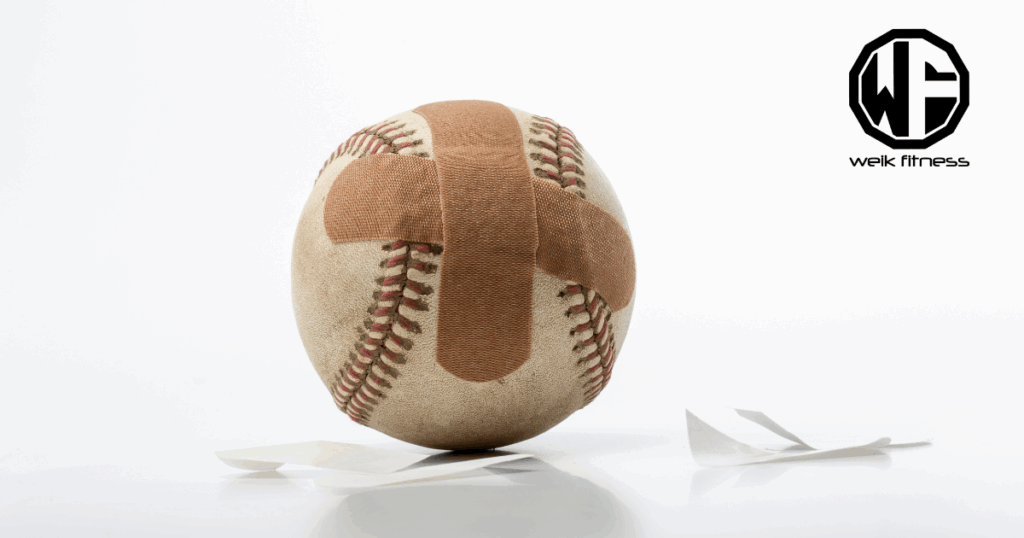
Common Types of Baseball Injuries
Baseball players face common injuries like sprains, strains, and fractures during games and practice. Knowing the signs helps you act fast and prevent worse problems.
With the risk of sport injuries, such as ligament injuries and even a concussion, it’s important to know what could happen and what you can do to help prevent them.
What Are Overuse Baseball Injuries Like Little League Elbow?
Overuse injuries come from doing the same motion too often.
Little League elbow injuries happen when repeated throws stress a growth plate, the soft area near the end of a bone. This area is weaker in young athletes. That said, even Major League Baseball players (and minor league baseball players) suffer elbow injuries (especially baseball pitchers).
Look for pain, swelling, warmth, or redness on the inside of the elbow. These signs can point to irritation or damage. Left alone, the injury may affect bone growth and arm strength later.
Doctors often advise 4 to 6 weeks of rest. Ongoing pain needs quick evaluation by a sports medicine specialist.
Warm up, learn safe throwing mechanics, and follow pitch count recommendations from USA Baseball and sports medicine experts. Protect the ulnar collateral ligament, a key elbow stabilizer, so the arm heals well.
How Do Rotator Cuff Tears Occur in Baseball?
Shoulder and elbow injuries tend to rank up there as quite common due to how you actually play baseball. Swinging… throwing… they both can do a number on the body and cause injuries in youth baseball and softball. We see these quite often in professional baseball.
RELATED: How to Increase Bat Speed and Bat Swing Power
The rotator cuff is a group of four small muscles and tendons. They lift and rotate your shoulder. Repetitive high-speed throws create tiny injuries in these tissues.
Over time, microtears build up. Pain may start during throws or the next day. All positions have risk, since every hard throw loads the shoulder joint.
Pitchers face the highest stress and risk for rotator cuff injuries. A small tear can become a full tear if ignored. Protect young baseball players’ shoulder with rest, proper form, and targeted strength work.
“Pitch after pitch takes its toll. Protect your shoulder today, and protect your season tomorrow.”
What Causes Ulnar Collateral Ligament (UCL) Injuries?
Most UCL injuries (ulnar collateral ligament injury) come from repeated overhead throwing. The UCL sits on the inner elbow and keeps the joint stable. Fast pitches send large forces through this ligament.
Early damage may feel like sharp inner elbow pain or tingling in the ring or pinky finger. Some players hear a pop. Younger pitchers see more UCL problems due to heavy workloads and year-round play.
Skipping rest or pitch counts increases the chance of a tear. Severe injuries may need Tommy John surgery. Report symptoms quickly to limit damage and return faster.
How Can Hamstring Strains Affect Baseball Players?
Hamstring strains and hamstring injuries can stall base running and limit speed. Sprinting from home to first often triggers a pull. Infielders face higher risk due to frequent quick starts.
On average, one strain costs about 14 to 16 days. Repeated strains take longer to heal and raise the chance of another setback. These injuries have increased across pro baseball in recent years.
Dynamic stretching, sprint drills, and eccentric hamstring work reduce risk. Keep good hip and ankle mobility to maintain stride length and control.
What Is Catcher’s Thumb and How Does It Happen?
Catcher’s thumb happens when a ball forces the thumb backward. The joint can hyperextend, which strains or tears the tendon on the back of the thumb. Severe cases pull the tendon off the bone, called an avulsion injury.

Pain and swelling start fast. Gripping the mitt or throwing becomes hard. Many players recover in six to eight weeks with rest and rehab. Some need surgery for full tears.
Choose a catcher’s mitt with extra padding and a strong thumb guard. Correct catching angles help absorb impact and protect the joint.
How Do Ankle Sprains Occur in Baseball?
Ankle sprains and ankle injuries often happen during slides, base touches, or quick cuts. A misstep on a bag or uneven ground can twist the ankle. Ligaments may stretch or tear. You can even suffer from knee injuries if you don’t slide correctly. Sliding injuries can be common in youth softball and baseball when an athlete does not know how to properly slide into a base.
That tends to be where we see a lot of the foot and ankle injuries that are, unfortunately, common in baseball players.
Playing through pain risks chronic instability and recurring sprains. Early care from a foot and ankle specialist improves healing. Strong rehab prevents long-term limits in running and fielding.
What Are the Signs of Shoulder and Elbow Sprains?
Sprains cause pain and swelling around the shoulder joint or elbow. Weakness and stiffness can follow. Many throwing injuries start as soreness that lasts into the next day.
Watch for reduced range of motion, poor grip, or trouble lifting the arm. These signs can signal a rotator cuff strain, labral tear, Little League elbow, or a UCL sprain. Stop and seek sports medicine care if symptoms appear.
How Common Are Finger, Hand, and Wrist Fracture Baseball Injuries?
Finger, hand, and wrist fractures are common in infielders and catchers. Hard grounders and fast throws can jam or break small bones. Catchers take repeated impacts on the glove hand.
Even a short break from practice affects timing and confidence. Use a quality glove (like the Wilson A2000 we reviewed) along with focusing on strong wrist support, training grip strength, and staying alert on every play.
Key Risk Factors for Baseball Injuries
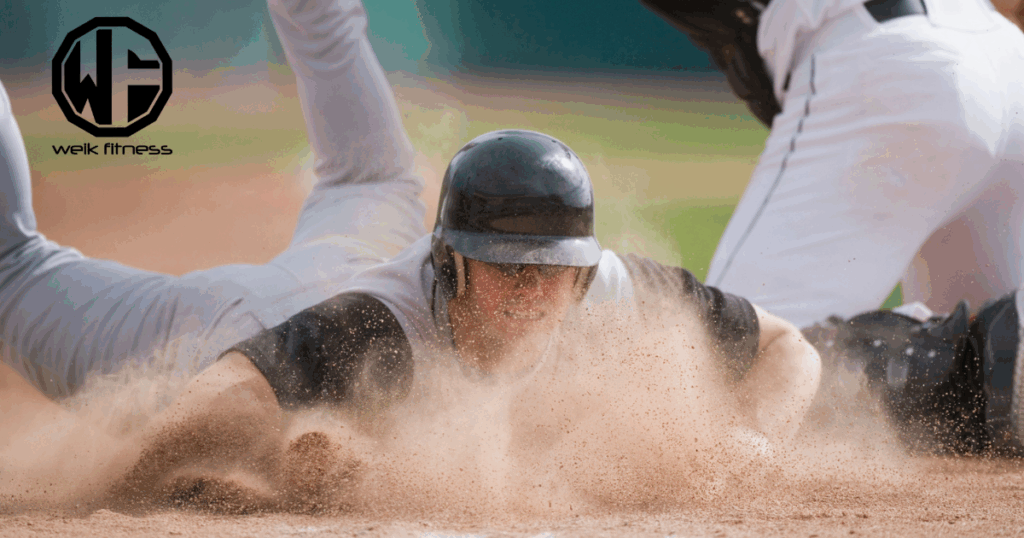
Many injuries come from simple habits, like overusing the arm or skipping prep work. Fix the risk factors, and you will play longer with fewer setbacks.
How Does Repetitive Throwing Increase Injury Risk?
Each throw puts stress on the shoulder and elbow.
The UCL and the bump on the inside of the elbow, called the medial epicondyle, take a lot of load. In growing athletes, strong muscles can even pull a small piece of bone, called an avulsion injury.
RELATED: How To Increase Baseball Throwing Speed and Pitch Velocity
Early signs include inner elbow pain, loss of velocity, and trouble straightening the arm. Tight shoulders, stiff hips, and poor posture raise stress with every throw. Pitch count rules limit stress and lower the risk of bigger injuries.
Why Is Poor Throwing Mechanics Harmful?
Bad mechanics shift force to smaller joints. Short strides, weak lower body drive, or late trunk rotation make the arm do extra work. That can inflame the rotator cuff or irritate the elbow.
Fatigue magnifies the problem. Long pitch counts and year-round baseball add strain. Solid mechanics protect the joints and improve command and velocity.
How Does Lack of Conditioning Contribute to Baseball Injuries?
Weak or tight muscles tire fast and stop protecting joints. Players without strength and flexibility training see more overuse injuries. The shoulder and elbow need support from the core, hips, and back.
Build a plan with balanced lifting, mobility, and rest days. One program does not fit everyone. Age, growth, and position all matter in training choices.
What Are the Risks of Skipping Proper Warm-Up?
Skipping warm-up raises the chance of strains and sprains. Cold muscles do not react well to sudden sprints, slides, or hard throws. Arms feel tight, and control often fades.
A good warm-up improves blood flow and joint motion. Players report less soreness, better command, and steadier velocity after a full prep. The routine pays off in late innings.
How Can Excessive Workloads Without Rest Cause Baseball Injuries?
Playing while tired multiplies injury risk. For pitchers, fatigue raises injury odds up to 36 times. Throwing more than 100 innings in a year triples risk as well.
RELATED: How To Improve Baseball Arm Recovery and Pitcher Arm Care
Competing for more than eight months per year raises injuries across the board. Stress piles up in the elbow and shoulder. Follow rest rules and pitch limits to keep tissue healthy.
Proven Methods to Reduce Baseball Injury Risks
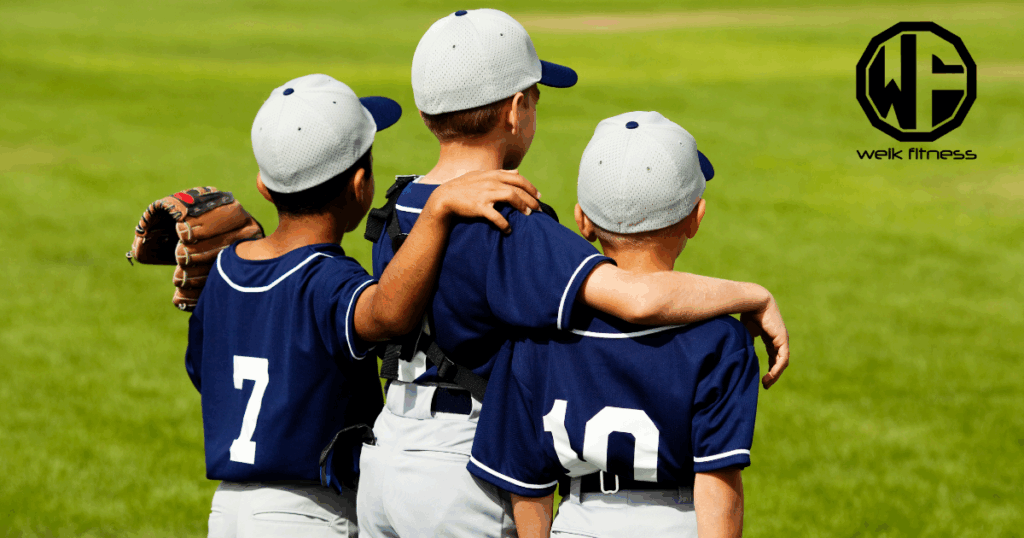
Small daily habits protect your body and sharpen performance. Use these methods to reduce risk and keep your season on track.
How Should Players Warm Up and Stretch Properly?
- Start with 5 minutes of light cardio to raise body temperature.
- Use dynamic stretches for 10 to 20 minutes, like arm circles and lunges.
- Add shoulder prep, including band work, to guard the rotator cuff and UCL.
- Mix in sport moves, like easy throws and half-speed swings.
- Drink water before and during warm-up to support muscle function.
- Prep ankles with circles and heel raises to reduce sprain risk.
- Finish with static stretches after play for flexibility and recovery.
- Wear well-fitted gear, including gloves with wrist support, for protection.
This routine cuts injuries like strains and overuse problems. It also improves control, reaction time, and confidence.
What Are the Benefits of Strength and Conditioning?
Strength and conditioning make muscles, tendons, and ligaments more resilient. That means fewer throwing injuries and fewer missed games. A stronger base lets you throw harder with less strain.
Core work and agility drills improve quickness and balance on the field. Good coaching keeps you consistent and teaches mental toughness. Recovery also improves when the whole body is trained.
Also, don’t neglect baseball nutrition to help perform at your best and help with proper recovery.
How Can Players Maintain Healthy Shoulders and Elbows?
- Warm up with light cardio, then use dynamic arm drills to boost blood flow.
- Follow age-based pitch counts and rest, which prevent overuse injuries like Little League elbow.
- Practice sound mechanics that spread force through the hips, trunk, and legs.
- Train the core, rotator cuff, and forearm muscles for joint stability.
- Cool down with gentle static stretches for the arms, chest, and back.
- Report pain early to avoid severe sprains or long layoffs.
- Protect sleep and take weekly rest days to aid recovery.
- Use protective gloves with strong wrist support during practice and games.
- Start with non-surgical care for minor pain, like ice, light motion, and approved anti-inflammatories.
Why Is Following Pitch Count Guidelines Important?
Pitch count rules protect young arms from overload. Arm injuries, including Little League elbow and UCL problems, are linked to too many pitches with too little rest. Following Pitch Smart reduces injury odds by about 70 percent.
Parents who know the rules help keep players safe. Tournaments and showcases often push workloads. Respect limits and schedule rest days to stay healthy all season.
How Can Throwing Mechanics Be Improved to Prevent Baseball Injuries?
- Begin with light toss and dynamic stretches before high-effort throws.
- Use video tools to spot flaws that stress the elbow or shoulder.
- Work with a coach on arm path, footwork, and timing.
- Train hip mobility so power starts from the ground, not the arm.
- Follow pitch counts set by your league and coaches.
- Strengthen the rotator cuff twice per week with simple dumbbell work.
- Get screened each season for range of motion and strength gaps.
- Stop if you feel pain or fatigue. Rest, then see a sports medicine pro.
Cleaner mechanics reduce stress, improve command, and help you stay active longer.
Injury Prevention Tips for Baseball Positions
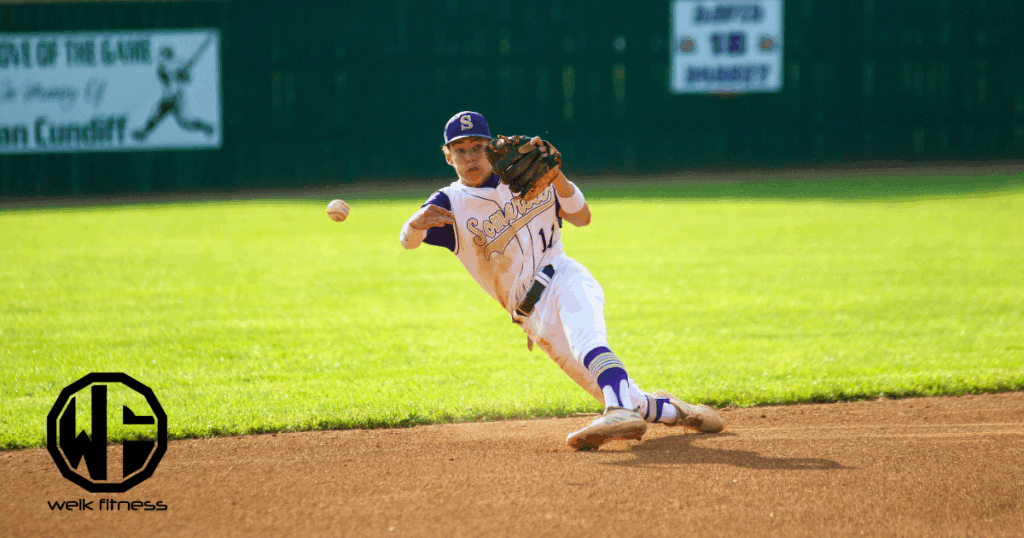
Each position loads the body differently. Use focused plans, smart rest, and position-specific gear to stay healthy.
What Rest and Pitch Limits Should Pitchers Follow?
- Cap to about 75 pitches per game to protect the shoulder.
- Keep seasonal totals under about 600 pitches to protect the elbow.
- Take 3 to 4 months away from overhead throwing every year.
- Avoid pitching more than eight months per year to lower surgery risk.
- Leave at least one full day off between outings, longer after heavy days.
- Follow age-based pitch rules from USA Baseball or Little League.
- Report any arm pain during or after games to your coach or trainer.
- Warm up before every outing, even if the arm feels loose.
- Skip catching on days you pitch to reduce extra stress.
- Track workload with simple logs or apps to avoid hidden fatigue.
These limits protect both health and performance across a long season.
How Can Catchers Protect Their Hands, Wrists, and Lower Back?
- Choose a padded catcher’s mitt that shields the thumb from backward bends.
- Wear full gear every inning, including mask, chest protector, and shin guards.
- Use gloves with added wrist support to control sudden impacts.
- Warm up hands and wrists with simple dynamic stretches before catching.
- Stretch hands and wrists after long innings to reduce stiffness.
- Strengthen with light wrist curls and band work several times a week.
- Keep a straight back and engaged core during the squat to protect the spine.
- Use a deep squat instead of bending forward at the waist.
- Share catching duties when possible to limit continuous impact.
- Check the field for holes or debris that can cause slips or falls.
- Hydrate well before and after games to reduce cramps during doubleheaders.
These habits guard your hands and back, letting you handle long games with less pain.
What Strengthening Exercises Help Infielders’ Hands and Wrists?
- Squeeze a tennis ball, 3 sets of 20 reps per hand, for grip.
- Use a band for finger extensions, 3 sets of 15 per hand.
- Do wrist curls, palm up and down, 3 sets of 12 to 15.
- Try fingertip push-ups on the floor or against a wall.
- Wring a damp towel to build forearm endurance for long innings.
- Roll wrists with a bat, 10 turns each direction, for flexibility.
- Add light glove-weight catches for 5 minutes twice per week.
Pair these with a solid glove that has wrist padding. You will handle bad hops with more control.
How Can Outfielders Avoid Overuse Baseball Injuries in Their Arms?
- Complete a full warm-up before high-effort throws to protect the arm.
- Hydrate well before and during practice to support muscle function.
- Limit extra hard throws during drills. Save max effort for game reads.
- Use sound mechanics to reduce stress on the shoulder and elbow.
- Train shoulders, upper back, forearms, and core at least twice weekly.
- Plan rest days after heavy workloads to help tissue recover.
- Report pain early instead of pushing through it.
- Wear a glove with wrist support to steady awkward catches.
- Inspect the turf for holes or hazards before long-throw drills.
- Mix in lighter catch-and-throw days to lower cumulative stress.
These steps keep your arm fresh and your throws accurate deep into the season.
Using Protective Equipment to Prevent Injuries
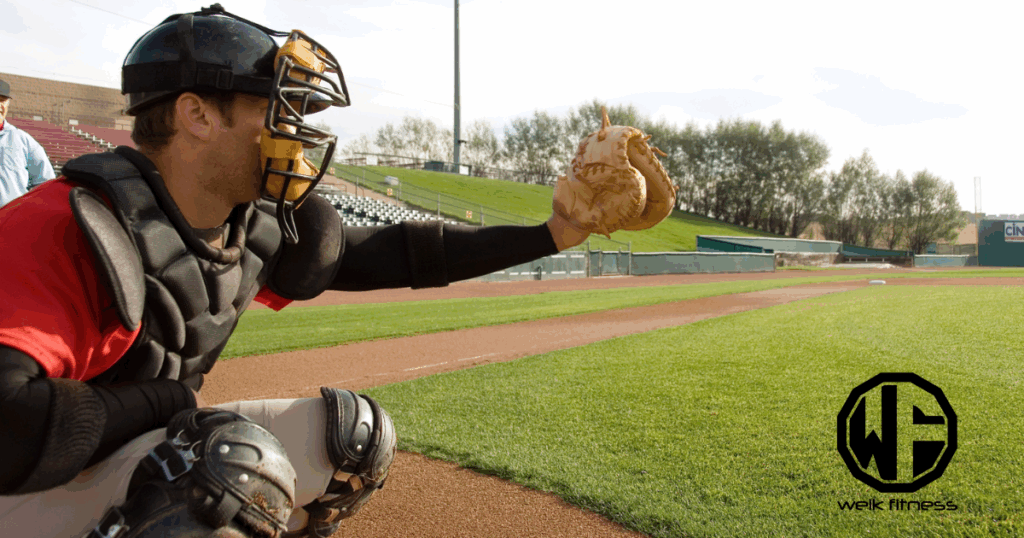
Quality gear reduces risk in every position. Pick equipment that fits well and matches your role on the field.
How Do Gloves with Wrist Support Help Players?
Wrist-supported gloves stabilize your hand during tough catches and strong swings. Better stability improves grip and control. The chance of re-injury drops, especially after a prior sprain.
Coaches encourage wrist-supported gloves in practice and games. The small upgrade adds protection without changing feel. It helps you focus on mechanics and play with confidence.
Why Are Shin Guards Important for Catchers?
Shin guards shield your lower legs from foul tips and spikes in the dirt. Proper coverage runs from the knee to the ankle. Good guards cut bruises and reduce fracture risk.
Use them alongside a chest protector and helmet with a face mask. You will spend more time playing and less time healing sore shins.
What Makes a Helmet and Face Guard Properly Fitting?
The helmet should sit about one inch above your eyebrows. Cheek pads must feel snug, and ear holes should line up with your ears. Secure the chin strap under the chin without pinching.
Keep helmet air bladders firm and use a quality face shield. Catchers need position-specific masks for full coverage. A tight, secure fit makes deflections less scary and safer.
Recovery and Rest Guidelines for Baseball Players
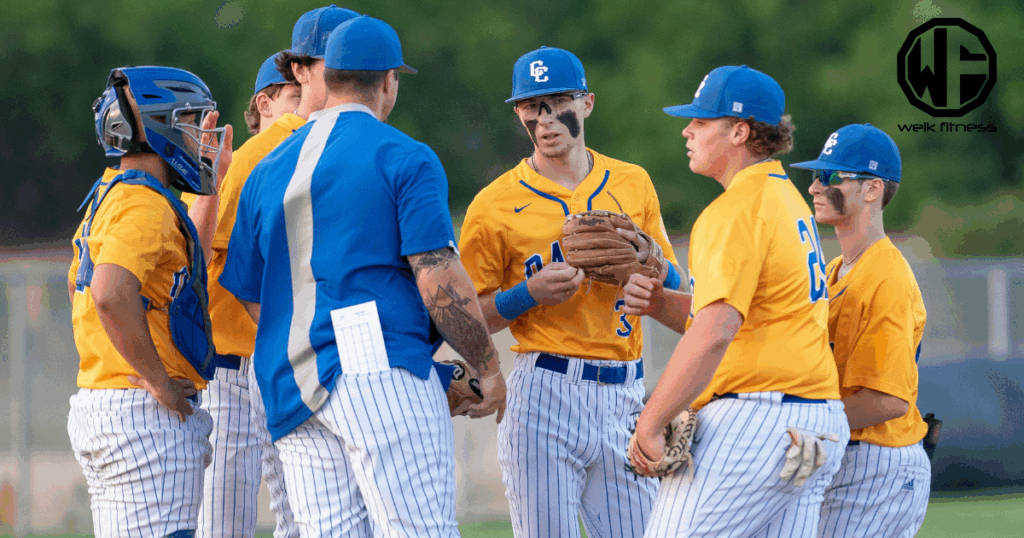
Recovery builds the next performance. Rest days, smart cool-downs, and quality sleep help your body repair between games.
How Much Rest Is Needed Between Games?
Three to five games a week stress the whole body. Aim for at least one full day off every seven days, more after heavy pitching. Sleep seven to nine hours per night for the best recovery.
Use active recovery, easy stretching, cold therapy, and good hydration. Give muscles time to rebuild before the next competition. You will reduce fatigue and play better.
What Are Early Signs of Baseball Injuries to Watch For?
Look for slower pitch speed, extra time between pitches, or reduced command. Weak grip or delayed reactions can also be warning signs. Soreness that lasts into the next day needs attention.
Loss of shoulder or elbow range of motion is a red flag. Ongoing pain after practice often points to deeper tissue strain. Early care prevents bigger problems.
Which Athletic Trainer Rehabilitation Exercises Aid Effective Recovery?
- Gentle range of motion drills keep joints moving without added stress.
- Use bands for shoulder external rotation and abduction three times per week.
- Light cardio, like cycling or swimming, reduces stiffness during rehab.
- For elbow rehab, restore motion first, then add light strength work.
- Balance drills after ankle sprains rebuild stability and control.
- Knee-focused sport drills prepare the legs for lateral movement and stops.
- For hamstrings, fix running form and add gradual sprint progressions.
- Use small dumbbells for wrist flexion and extension to restore grip strength.
- Try wall slides to improve shoulder mobility before a return to throwing.
- Catchers can train thumb stability with putty or squeeze balls.
These exercises support safe progress back to play. Work with a licensed provider for a plan that fits your injury and position.
Best Training Practices for Young Baseball Athletes
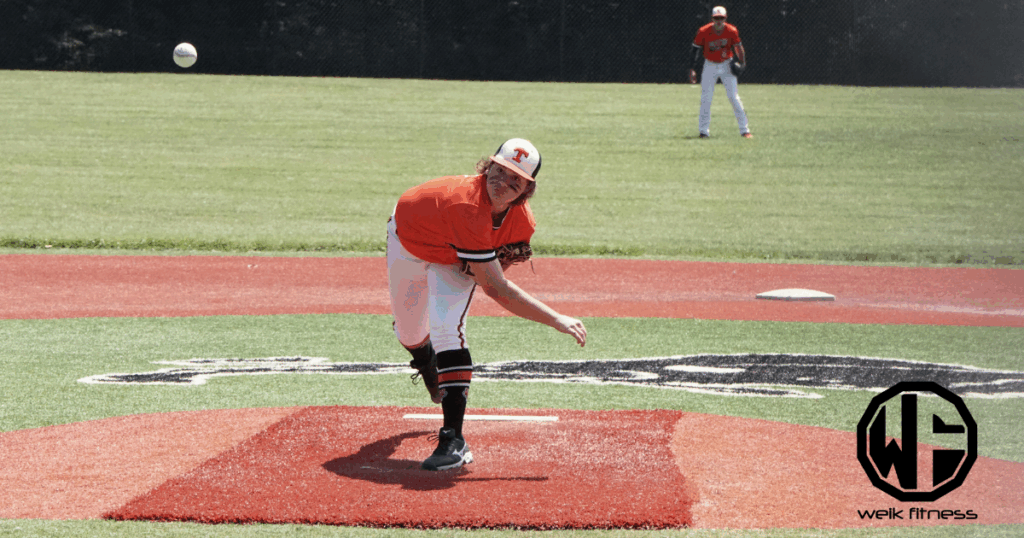
Good habits early create durable athletes. Safe training, patient progress, and time away from throwing protect young arms.
How Does Cross-Training Benefit Youth Baseball Players?
Cross-training spreads stress across different muscles and joints. Sports like soccer or swimming build endurance and balance. Taking time away from throwing rests the elbow and shoulder.
Variety keeps training fun and reduces burnout. New coaches and teammates build confidence and teamwork. The National Academy of Athletics supports this approach for youth development.
What Is the Best Way to Gradually Increase Training Intensity?
Start with soft toss, then move to full pitching in practice. Add a little more workload each week, not all at once. Follow age-based pitch count guidelines for safe progress.
Keep mechanics sharp during new drills. Use warm-ups, then stretches like the sleeper stretch for the shoulder. Limit baseball to about eight months per year to protect the arm.
How Can Young Players Learn About Injury Prevention?
Learn from certified athletic trainers and physical therapists. The sport of baseball doesn’t come without some inherent risk. Many players and even coaches miss key safety rules. Use USA Baseball resources for pitch counts and safe mechanics.
Watch short videos that show proper drills and warm-ups. Tell an adult early if your arm feels tired or sore. Quick action prevents bigger issues later. Education builds strong, healthy habits.
The Goal is to Minimize Baseball Injuries and Help Players Return to Play Safely
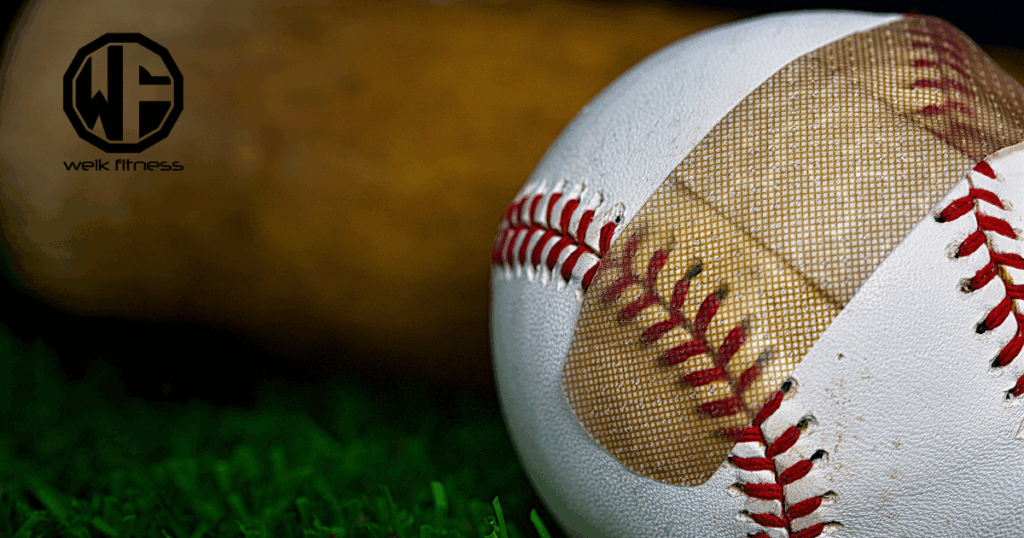
Staying healthy in baseball takes planning and discipline if you want to stay or get back on the field.
Use warm-ups, strength work (stretching and strengthening exercises), and smart pitch counts to protect the shoulder and elbow. Wear gear that fits right, including a helmet, shin guards, and a glove with wrist support.
Take rest days seriously. Tune mechanics, report pain early, and use proven recovery steps. You will spend more time playing and less time healing. For medical concerns, consult a licensed sports medicine professional.
Health first, performance next. Keep the habits simple, stay consistent, and enjoy more innings with your team by lowering your risk of baseball injuries.
Common Baseball Injuries FAQs
Sprains, muscle strains, and shoulder pain often affect players. To lower your risk, warm up with dynamic stretches before practice or games. Focus on proper throwing mechanics and use protective gear like batting helmets or shin guards every time you play.
Building core muscles supports balance and stability during swings or throws. Strong legs reduce stress on knees while running bases; arm exercises protect elbows from overuse. Consistent workouts keep your body ready for fast moves on the field.
Rest gives muscles time to repair after intense activity; skipping breaks leads to fatigue, which increases mistakes that cause harm. Schedule days off between practices so joints recover fully—your performance will improve as a result.
Yes, using correct form when pitching or sliding keeps pressure off sensitive areas like wrists or ankles; coaches should teach these skills early so habits stick long-term. Mastering technique not only prevents accidents but also boosts confidence each time you step onto the diamond… imagine playing at your best without worrying about setbacks!
Baseball Injuries References
- https://www.choa.org/parent-resources/sports-medicine/is-your-young-athlete-at-risk-for-little-league-elbow
- https://www.littleleague.org/university/articles/the-number-one-risk-of-arm-injuries-continues-to-be-year-round-play/
- https://www.northwell.edu/orthopaedic-institute/specialties/sports-medicine/expert-insights/ways-to-prevent-rotator-cuff-tears-in-baseball-players
- https://www.hopkinsmedicine.org/health/conditions-and-diseases/ulnar-collateral-ligament-ucl-injuries-of-the-elbow
- https://pmc.ncbi.nlm.nih.gov/articles/PMC6685122/
- https://www.justballgloves.com/blog/post/catcher-thumb-guard/
- https://www.foothealthfacts.org/conditions/baseball-injuries-to-the-foot%C2%A0and-ankle
- https://www.uchealth.com/en/media-room/articles/common-softball-and-baseball-injuries-and-prevention
- https://orthoinfo.aaos.org/en/staying-healthy/baseball-injury-prevention/
- https://www.rwjbh.org/blog/2024/october/common-injuries-among-major-league-baseball-play/
- https://pmc.ncbi.nlm.nih.gov/articles/PMC11299331/
- https://www.thesportsmedcenter.com/blog/baseball-injuries-awareness-and-prevention
- https://pediatricorthopedics.com/common-injuries-in-baseball-and-softball/
- https://www.chop.edu/news/health-tip/common-baseball-softball-injuries-and-how-prevent-them
- https://pmc.ncbi.nlm.nih.gov/articles/PMC9076771/
- https://www.epbydmos.com/blog/understanding-the-risk-of-overuse-injuries-in-baseball-a-baseball-performance-training-guide-for-coaches-and-players
- https://advancedkinetics.com/injury-prevention-strategies-for-baseball-players/
- https://pbsccs.org/the-long-term-benefits-of-strength-and-conditioning-for-youth-baseball-players/
- https://advancedorthosports.com/blog/shoulder-and-elbow-injuries-in-baseball/
- https://pmc.ncbi.nlm.nih.gov/articles/PMC6537076/
- https://www.truesportsphysicaltherapy.com/blogs/unlocking-the-science-behind-throwing-mechanics-for-overhead-athletes
- https://pmc.ncbi.nlm.nih.gov/articles/PMC3445126/
- https://msspc.org/common-baseball-injuries/
- https://brucebolt.us/blogs/news/softball-and-baseball-safety
- https://koreystringer.institute.uconn.edu/protective-equipment/
- https://www.ewmotiontherapy.com/blog/recovery-baseball-players
- https://www.childrens.com/health-wellness/common-baseball-injuries-and-how-to-prevent-them
- https://advancedkinetics.com/rehabilitation-strategies-for-baseball-injuries/
- https://nationalacademyofathletics.com/cross-training-for-youth-athletes/
- https://pmc.ncbi.nlm.nih.gov/articles/PMC4526793/





